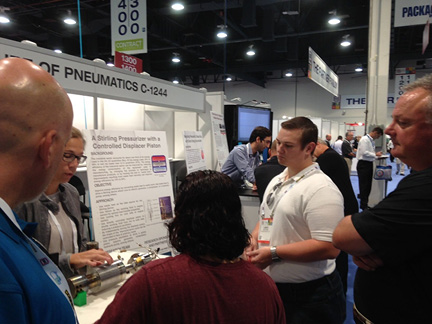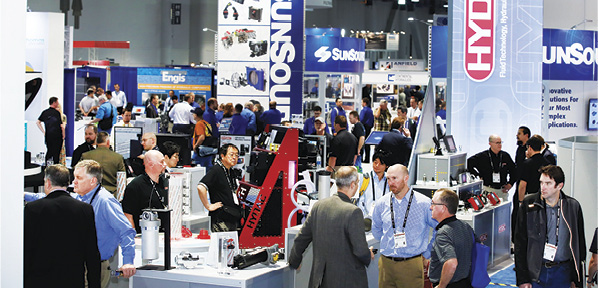Standardizing Energy Measurement for Fluid Power Systems
The following article was written for NFPA’s Power2Move blog–a site created for those interested in knowing more about new technologies and changes going on in the fluid power industry. To learn more about Power2Move go to www.pwr2move.com.
One of the core challenges identified in the Technology Roadmap for the fluid power industry is increasing the energy efficiency of hydraulic and pneumatic systems. According to a study recently published by the U.S. Department of Energy, fluid power systems in all environments—mobile, industrial, and aerospace—account for roughly 2-3% of our nation’s energy, and they run at an average efficiency of only 22%.
Organizations like the National Fluid Power Association, research universities in the Center for Compact and Efficient Fluid Power, and companies throughout the fluid power industry are working—and succeeding—in making improvements on this score, but one area that is just starting to get attention is finding a standardized way to measure energy consumption in fluid power systems.
It is a critically important area to focus on. Without such a standard, demonstrating energy efficiency improvements in the marketplace as a result of new component designs, new system architectures, or other technical advancements is a very subjective proposition.
Imagine if there was no standard driving cycle by which miles per gallon were measured in automobiles. Every car manufacturer would use its own driving cycle, publish its own results, and the consumer would have no way to compare cars from different manufacturers. Perhaps more importantly, automotive suppliers who wanted to sell products to the car manufacturers that would help improve fuel economy would have to have truly remarkable breakthroughs—adding 10 or more miles per gallon—before such breakthroughs would be adopted by the industry as a whole. Such leaps in fuel savings would be necessary in order to show progress on all of the various testing methods being employed by all the car manufacturers.
Fortunately for the car industry, there is a standardized way of measuring fuel economy—consumers can reliably compare the efficiency of one automobile versus another, and suppliers can introduce products that demonstrate incremental savings on fuel economy. Unfortunately, however, this is not the case for the fluid power industry and many of the heavy equipment industries that it serves.
But now, an effort is underway in order to change that. ISO Technical Committee 131, the international body responsible for fluid power standards, is initiating a discussion on how to tackle this problem in hydraulic and pneumatic systems. I was able to participate on its inaugural teleconference on the subject and will be part of the expanded discussion as it moves forward. There will even be a meeting of interested parties at the upcoming Fluid Power Systems Conference this November.
We welcome all perspectives into the discussion.






